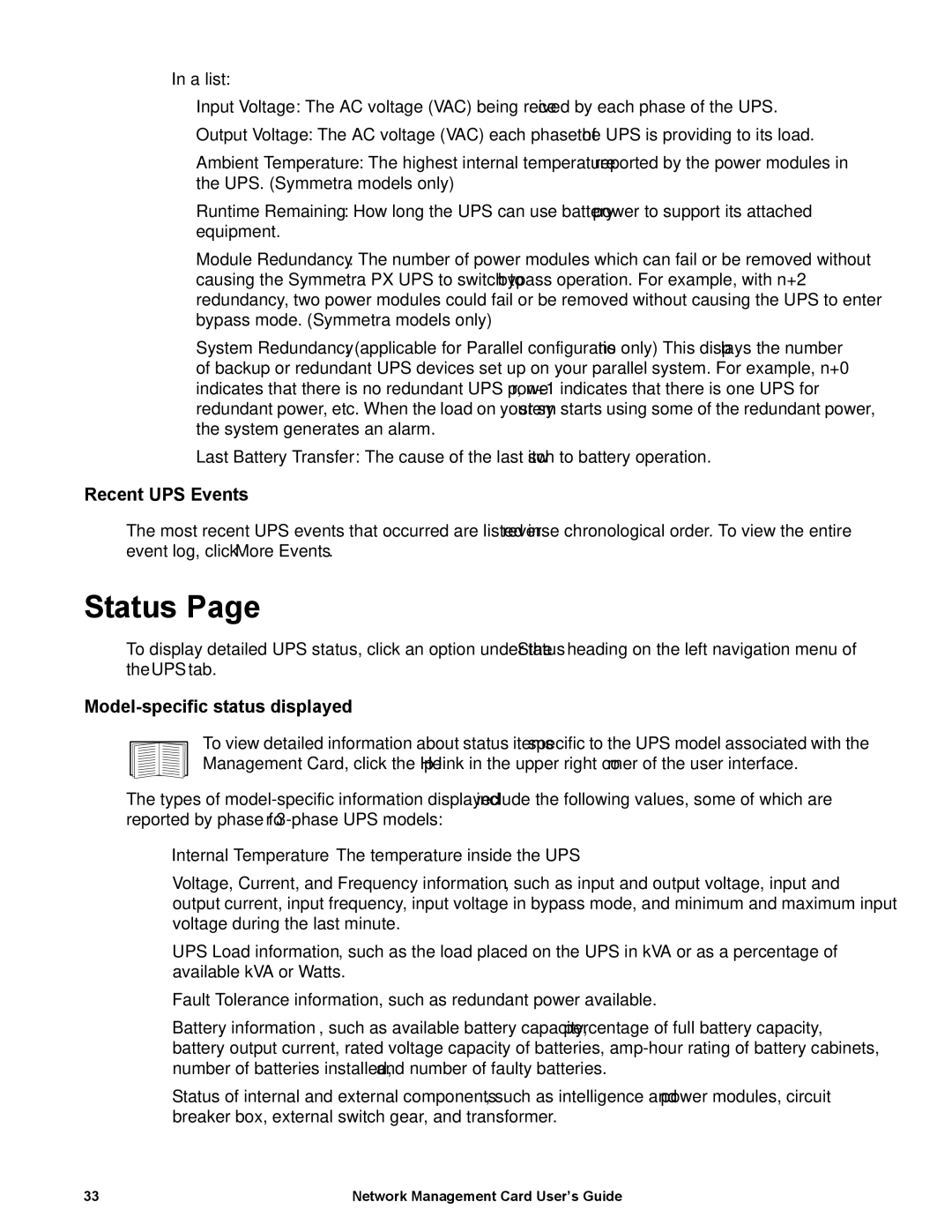•In a list:
–Input Voltage: The AC voltage (VAC) being received by each phase of the UPS.
–Output Voltage: The AC voltage (VAC) each phase of the UPS is providing to its load.
–Ambient Temperature: The highest internal temperature reported by the power modules in the UPS. (Symmetra models only)
–Runtime Remaining: How long the UPS can use battery power to support its attached equipment.
–Module Redundancy: The number of power modules which can fail or be removed without causing the Symmetra PX UPS to switch to bypass operation. For example, with n+2 redundancy, two power modules could fail or be removed without causing the UPS to enter bypass mode. (Symmetra models only)
–System Redundancy: (applicable for Parallel configurations only) This displays the number of backup or redundant UPS devices set up on your parallel system. For example, n+0 indicates that there is no redundant UPS power, n+1 indicates that there is one UPS for redundant power, etc. When the load on your system starts using some of the redundant power, the system generates an alarm.
–Last Battery Transfer: The cause of the last switch to battery operation.
Recent UPS Events
The most recent UPS events that occurred are listed in reverse chronological order. To view the entire event log, click More Events.
Status Page
To display detailed UPS status, click an option under the Status heading on the left navigation menu of the UPS tab.
Model-specific status displayed
To view detailed information about status items specific to the UPS model associated with the Management Card, click the Help link in the upper right corner of the user interface.
The types of
•Internal
•Voltage, Current, and Frequency information, such as input and output voltage, input and output current, input frequency, input voltage in bypass mode, and minimum and maximum input voltage during the last minute.
•UPS Load information, such as the load placed on the UPS in kVA or as a percentage of available kVA or Watts.
•Fault Tolerance information, such as redundant power available.
•Battery information, such as available battery capacity, percentage of full battery capacity, battery output current, rated voltage capacity of batteries,
•Status of internal and external components, such as intelligence and power modules, circuit breaker box, external switch gear, and transformer.
33 | Network Management Card User’s Guide |
